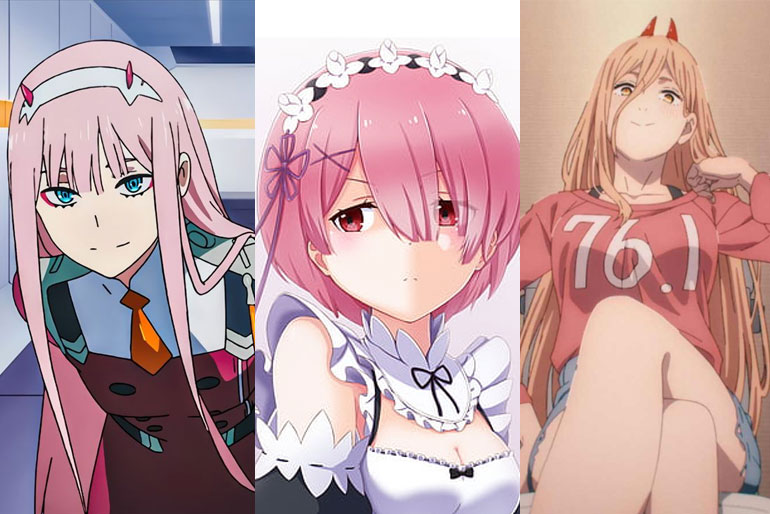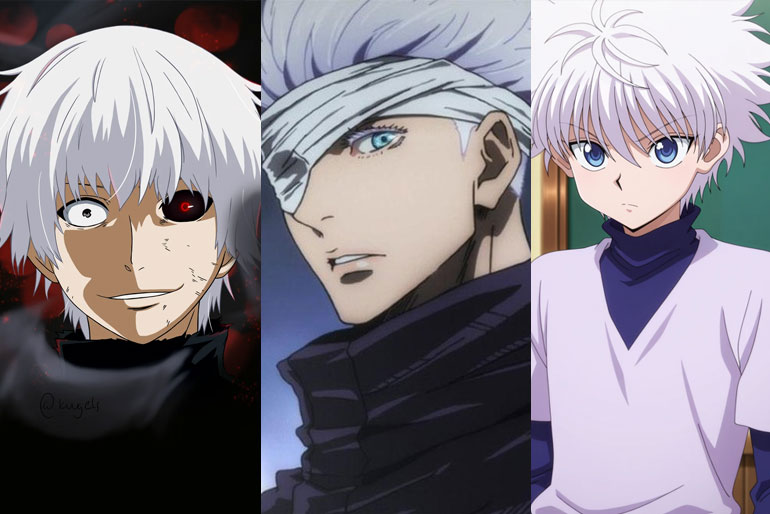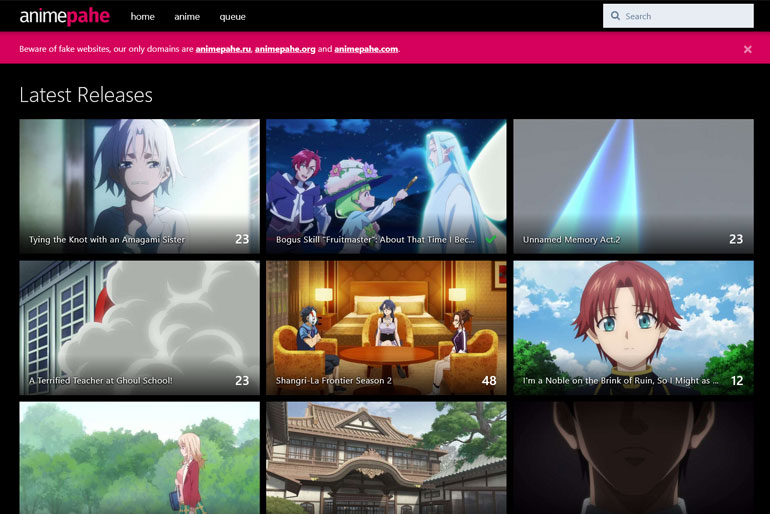Anime has a way of tugging at our heartstrings like no other medium. Some animated films leave us smiling, but others deliver emotional stories that linger long after the credits roll. In this article, we’ll explore some of the saddest anime movies – the ones that make us reach for the tissue box. Each film is beautiful in its own right, blending storytelling and emotion in a way that resonates with both newcomers to anime and longtime fans. These movies tackle themes of love, loss, friendship, and the passage of time, often in breathtaking visual style. Get ready for a journey through tear-jerking tales that demonstrate how powerful and touching anime cinema can be.
1. The Tale of the Princess Kaguya
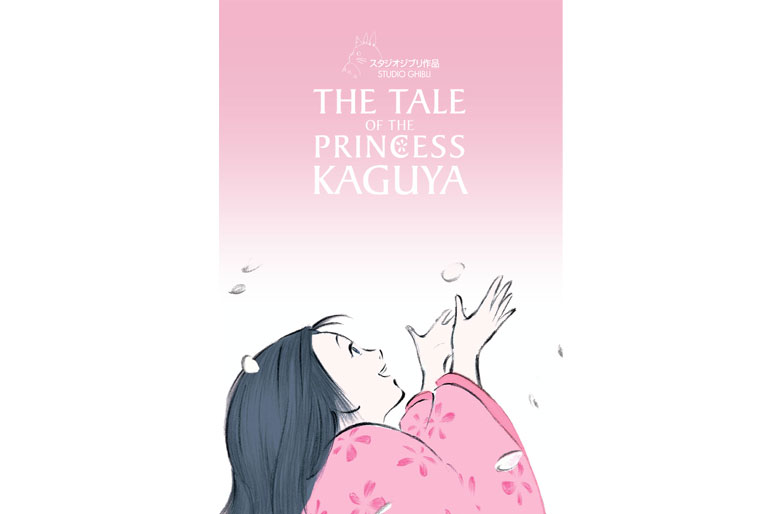
The Tale of the Princess Kaguya is a Studio Ghibli masterpiece that is as poignant as it is beautiful. Directed by Isao Takahata, the film adapts a classic Japanese folktale about a tiny baby found inside a bamboo stalk who grows into a radiant young princess. Kaguya is raised by adoptive parents who believe she is a blessing from heaven, and they usher her into a life as an aristocratic princess in the capital. While Kaguya experiences moments of joy – dancing under cherry blossoms and laughing in the countryside – there is an undercurrent of sadness in her story. She longs for the simple freedom of her childhood in the bamboo grove, a pastoral life that felt genuine and warm. As suitors and societal expectations close in on her, Kaguya becomes increasingly melancholic, burdened by a fate she never chose. The hand-drawn watercolor art style reinforces the emotional tone; fleeting moments of happiness are depicted with ethereal beauty, while scenes of sorrow are hauntingly sparse. By the film’s end, Princess Kaguya delivers a profound meditation on the impermanence of life’s joys. It’s heart-wrenching to watch Kaguya’s tears as she struggles between her celestial origins and her earthly attachments. The emotional impact of her final departure – accompanied by memory-tinged flashbacks of laughter and love – leaves many viewers sobbing. This bittersweet tale highlights the pain of appreciating every beautiful moment, knowing it cannot last forever, and that gentle sense of mourning makes The Tale of the Princess Kaguya an incredibly touching experience.
2. Hotarubi no Mori e
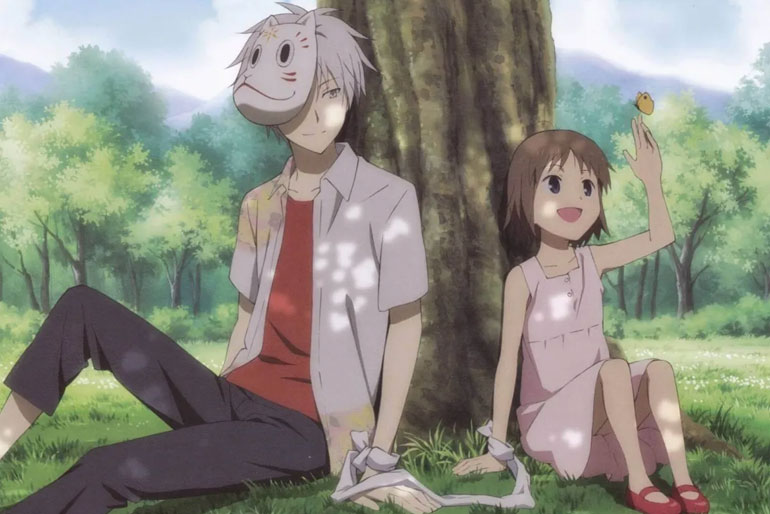
Hotarubi no Mori e (translated as Into the Forest of Fireflies’ Light) is a short film that packs a powerful emotional punch. It tells the story of Hotaru, a young girl, and Gin, a mysterious forest spirit boy she befriends one summer. Hotaru first encounters Gin as a child when she gets lost in a woodland said to be home to spirits. Gin wears a mask and has a gentle voice; he rescues Hotaru and guides her out, but there’s a catch – he cannot be touched by a human, or he will disappear. Despite this magical restriction, Hotaru returns to the forest every summer to spend time with Gin. As years pass and Hotaru grows from a carefree child into a teenager, their bond deepens into a tender love. The forest scenes are bathed in golden summer light, giving their friendship a dreamy, innocent quality. Yet, underlying every sweet moment is a sense of impending sorrow; the audience is constantly aware that Hotaru and Gin literally cannot hold each other, no matter how close they become. The film builds to a festival night under lantern lights where the two finally come face-to-face with the inevitable. In a tragic twist of fate, a brief accidental touch triggers Gin’s disappearance – but not before he takes the chance to embrace Hotaru once for the first and last time. That final hug is both beautiful and devastating, as Gin fades away while thanking Hotaru for giving him a life’s worth of happiness in just a few summers. Hotaru is left standing in the now-empty forest, holding the mask Gin left behind, tears flowing. This delicate story captures the pain of love that is destined to be temporary. With its short runtime and simple premise, Hotarubi no Mori e leaves many viewers emotionally wrecked, remembering how precious even fleeting connections can be.
3. Your Name
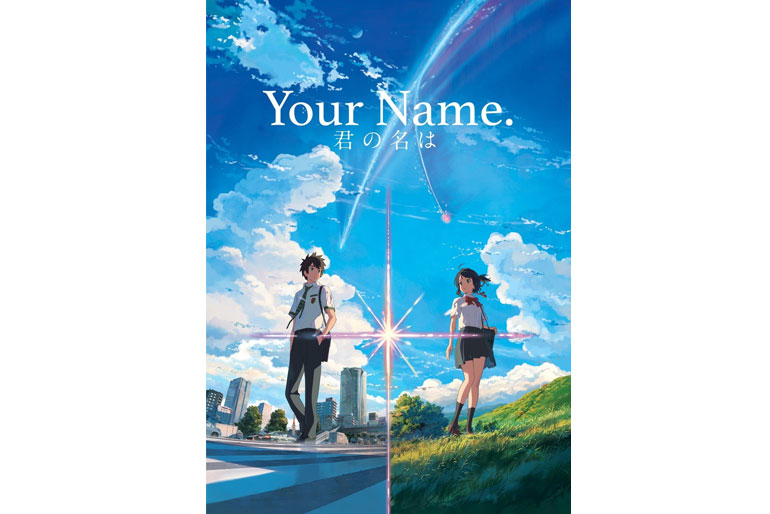
Your Name became a worldwide phenomenon for good reason: it weaves a deeply emotional tale disguised as a body-swapping fantasy. Directed by Makoto Shinkai, this 2016 film follows two high schoolers – Mitsuha, a girl in a tranquil rural town, and Taki, a boy in bustling Tokyo – who mysteriously begin waking up in each other’s bodies intermittently. What starts as a comedic Freaky-Friday scenario (imagine the confusion and awkward hijinks!) soon blossoms into an emotional bond that transcends space and time. Mitsuha and Taki learn about each other’s lives and begin caring for one another, leaving notes and messages as they swap back and forth. Their connection is heartfelt and genuine; even though they have never met in person, they form a friendship filled with concern, support, and a hint of longing love. Then, in true dramatic fashion, fate throws a curveball – the body-switching stops abruptly. Taki, feeling an intense absence, sets out to find Mitsuha, driven by an urgency he can’t fully explain. What he discovers is a poignant twist that shifts the film into tearjerker territory: Mitsuha’s town was destroyed by a comet incident years earlier, and the two have actually been separated by time. The revelation is a gut-punch that recontextualizes everything, and suddenly the race is on to bridge that impossible gap. As the narrative winds toward its climax, Your Name delivers one emotional scene after another – from Taki and Mitsuha trying desperately to write each other’s names so they won’t forget, to the moment they sense each other’s presence atop a mountain at twilight (without actually seeing one another). The animation of the comet streaking across the sky juxtaposed with Mitsuha’s tear-filled eyes is breathtaking and heartbreaking. Despite a hopeful ending that suggests the two might find each other again, the journey there is filled with emotional highs and lows that leave the audience sniffing and clutching their hearts. Your Name masterfully combines sweeping romance and poignant tragedy, making it a movie that many people admit made them cry buckets – yet they’d watch it again in a heartbeat.
4. The Garden of Words
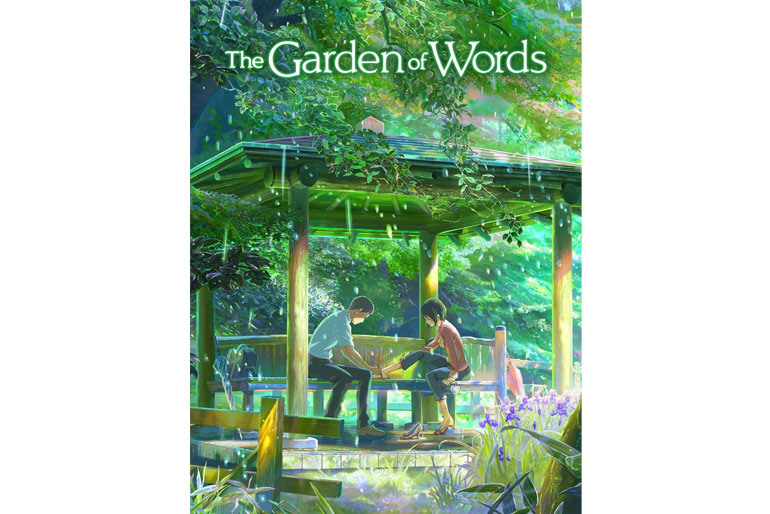
The Garden of Words is a quieter, more intimate kind of sad film. In this Makoto Shinkai short feature, a 15-year-old student named Takao and a 27-year-old woman named Yukino begin an unlikely friendship set against the backdrop of tranquil rainy mornings. Both characters are lonely in their own ways: Takao skips school to sketch shoe designs in a park gazebo, avoiding the pressures he faces at home and school, and Yukino sits in that same garden sipping beer and eating chocolate for breakfast, seemingly running away from her own job and problems. When they first cross paths on a rainy day, there’s an unspoken understanding between them. Without ever formally introducing themselves, they continue to find each other in the garden on each wet morning – Takao drawn to Yukino’s mysterious melancholy, Yukino warmed by Takao’s youthful sincerity. The film’s tone is gentle and atmospheric. You can practically smell the petrichor and feel the raindrops, as Shinkai’s signature stunning visuals make the garden lush and almost magical. As Takao and Yukino open up bit by bit, we learn Yukino is a teacher who has been dealing with severe personal setbacks and depression, and Takao becomes determined to craft a pair of handmade shoes for her – a symbol of his care. There’s a deep emotional undercurrent in their conversations, as both characters are filling voids in each other’s lives. The sadness of The Garden of Words comes from its realism: these two souls understand each other, yet the gap in their ages and life situations looms over them. When the rainy season ends, the two stop meeting in the garden, and Yukino disappears without explanation, leaving Takao hurt and confused. In the heartfelt climax, a chance reunion on a stormy afternoon leads to raw confessions. Takao pours out his feelings – how she gave his life meaning – and Yukino finally breaks down, admitting how lost she’s been and how much his companionship saved her. They embrace as rain pounds around them, both of them in tears. It’s a cathartic, emotional scene that feels incredibly real. And though their stories diverge afterward (Yukino must move forward and Takao must finish growing up), there’s a lingering sadness and sweetness about their time together. The Garden of Words captures that wistful feeling of a brief encounter that leaves a lasting impact, making it a beautifully melancholic film that many viewers find quietly heartbreaking.
5. A Silent Voice
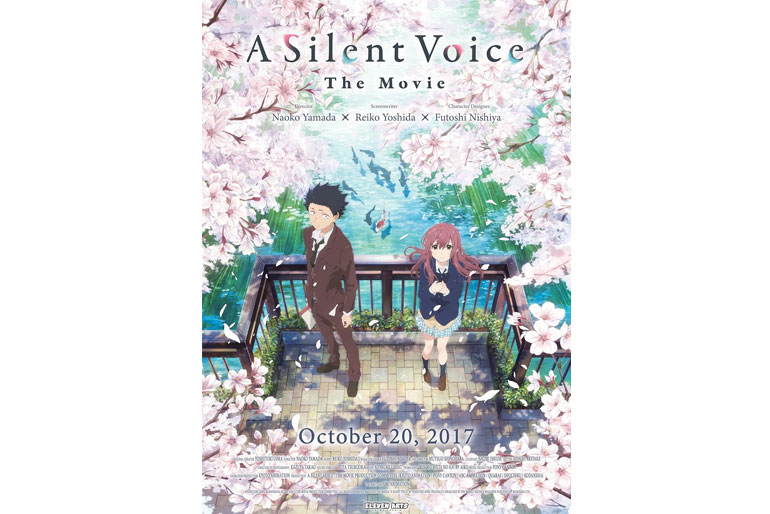
A story of guilt, forgiveness, and self-worth, A Silent Voice (directed by Naoko Yamada at Kyoto Animation) is a film that tackles heavy emotions head-on. It centers on Shoya Ishida, a teenager who, years ago in elementary school, bullied a deaf girl named Shoko Nishimiya. As a kid, Shoya led the class in tormenting Shoko – snatching away her hearing aids (even causing injury) and isolating her until she had to transfer schools. The film doesn’t shy away from showing how cruel children can be, and those early scenes are painful to watch. But the true emotional weight comes later: now in high school, Shoya is drowning in remorse for what he did. He’s so wracked with guilt and anxiety that he’s essentially shut himself off from the world – he can’t look people in the eye, and he even contemplates suicide, feeling he doesn’t deserve to live. A Silent Voice begins with this dark premise and gradually unfolds into a redemptive journey. When Shoya reunites with Shoko years after their childhood, he’s desperate to make amends. Shoko, who has her own deep scars from the past bullying, is surprised but openhearted when Shoya approaches her. Their awkward attempts at friendship are incredibly touching. Shoya learning sign language so he can apologize properly is one of those small acts that carry huge emotional significance. Throughout the film, we see both teens struggle with depression and the fear of not deserving happiness. Shoko, despite all she endured, is kind and wants Shoya to forgive himself, while Shoya has to confront not only Shoko’s pain but also the hurt he caused others and himself. The movie crescendos in a dramatic scene where Shoko, believing she is a burden on everyone, tries to take her own life – and Shoya frantically intervenes to save her, nearly losing his own life in the process. It’s a heart-stopping moment that had many viewers sobbing, as Shoya finally understands how much Shoko’s life matters and Shoko realizes how far Shoya is willing to go to protect her. Ultimately, A Silent Voice finds hope: it’s about these two young people learning to forgive and love themselves with each other’s help. The final scenes, where Shoya is finally able to look up and see the faces of the people around him (imagery that signifies his overcoming social anxiety and self-hatred), deliver a rush of cathartic tears – this time of relief and bittersweet happiness. The film’s honest exploration of bullying’s lasting impact and the road to redemption makes it devastating in parts, but also profoundly moving. Many fans call A Silent Voice one of the most emotionally satisfying anime movies, because it earns its tears through a story of empathy and growth that anyone can find meaningful.
6. 5 Centimeters Per Second
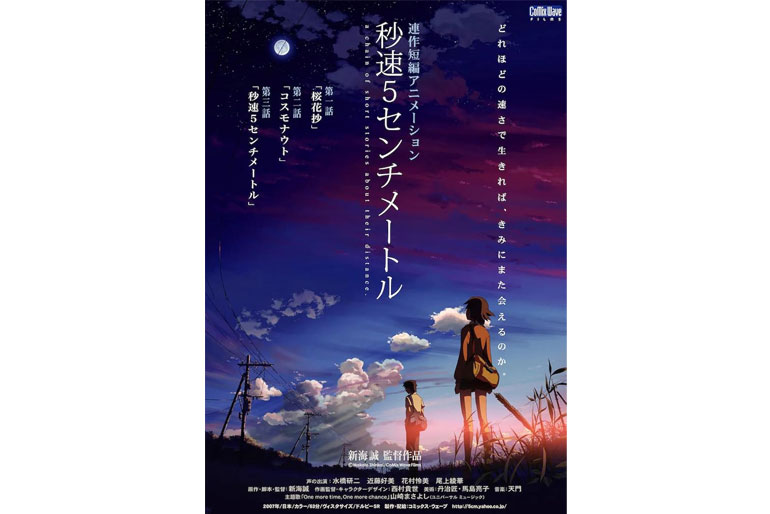
Makoto Shinkai’s 5 Centimeters Per Second is often described as poetry in motion – and it’s a poem about distance, both physical and emotional. This film is actually told in three chapters, following the life of a boy named Takaki Tono and, to an extent, his childhood friend Akari Shinohara. In the first segment titled Cherry Blossom, Takaki and Akari are young and inseparable best friends in elementary school. They share a innocent, tender bond – watching cherry blossoms together and exchanging shy smiles that hint at first love. But when Akari’s family relocates to another city, the two are separated. They promise to keep in touch and to see the cherry blossoms together again someday, a promise that becomes the anchor of their hopes. Takaki plans to visit Akari by train one winter, braving a long journey through heavy snow to reunite with her. This section is filled with an aching kind of suspense – as delays and weather hinder Takaki’s trip, you feel his desperation and the fear that time (and distance) may be pulling them apart. When they finally meet late at night at a small station, the reunion is quiet but emotional. They sit in an old shed, share a long-awaited kiss, and talk until midnight. Yet, as Takaki departs on the last train home, both sense that life’s course may be scattering them in different directions despite their love. The subsequent chapters show exactly that: in high school, Takaki drifts through life still writing unsent emails to Akari, while another girl silently pines for him; by young adulthood, Takaki is in Tokyo working, and Akari is preparing to marry someone else. The film’s title comes from the falling speed of sakura petals, symbolizing how people can start together but slowly drift apart. Nowhere is this more poignantly captured than the ending montage. In the final scene, Takaki and Akari seemingly cross paths at a train crossing in spring. Recognizing the familiarity of each other as a train rushes by between them, Takaki stands waiting on one side, hoping for another glance once the train has passed. But when the tracks clear, Akari is no longer there – she has moved on. Takaki, after a pause, gives a little bittersweet smile and continues walking in the opposite direction as cherry blossom petals swirl through the air. It’s an ending that leaves a lump in your throat. There’s no grand reunion, no dramatic breakdown – just a realistic acknowledgement that some people who mean the world to each other will not stay in each other’s lives. 5 Centimeters Per Second resonates with anyone who has felt the slow, quiet heartbreak of growing apart from someone you care about. It’s beautiful, melancholy, and almost painfully relatable in its depiction of love lost to time and distance.
7. Millennium Actress
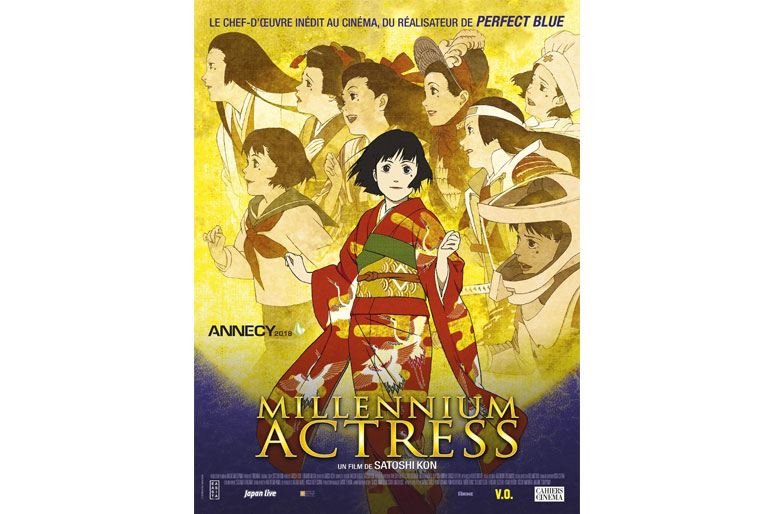
Satoshi Kon’s Millennium Actress is a dazzling and emotional journey through one woman’s life – a life defined by yearning and reminiscence. The film introduces us to Chiyoko Fujiwara, an elderly former movie star who has lived in seclusion for decades. When two documentary filmmakers visit to interview her about her career, Chiyoko begins to recount her life story. What unfolds is a sweeping trip through Japanese history and cinema, as scenes from Chiyoko’s films blend seamlessly with her real memories. At the heart of Chiyoko’s tale is a single, profound emotion: the longing for a lost love. As a teenager in wartime Japan, Chiyoko helped a dissident artist on the run, and in their brief time together she fell in love. He gave her a parting gift – a key – telling her it was “the key to something very precious.” Chiyoko held onto that key (both literally and metaphorically) for the rest of her life. She became an actress largely as a way to search for this mysterious man, chasing his shadow through the roles she played. In one film she’s a princess running through Edo-period Japan, in another a geisha in the Meiji era, then an astronaut in a sci-fi future – and in each story, she’s pursuing someone just out of reach, mirroring her real quest. This unique narrative device makes Millennium Actress magical to watch, but also deeply moving. We see Chiyoko age from a bright-eyed girl fueled by love to a seasoned actress who still clings to hope that she’ll find him someday. There are moments of joy when it seems she might catch up to him, and crushing moments when fate intervenes – like when an earthquake separates them, or when she realizes years later that she’s forgotten his face yet still can’t let go of her feelings. By the end of the film, the boundary between cinema and reality has all but dissolved. In her old age, Chiyoko finally discovers what became of the key (and thus the man), but more importantly, she comes to a poignant revelation. In a line that never fails to draw tears, Chiyoko says that even though she never reunited with her love, “I always loved him – and because of that, I always will love chasing him.” It’s a beautiful twist: for her, the act of loving and searching was the true treasure of her life, the “most important thing” the key opened. It’s a sentiment that hits home for anyone who has chased a dream or held onto a memory. Millennium Actress leaves you with a sweet sadness – the kind that comes from appreciating how love can endure as a feeling, even if circumstances prevent it from being fulfilled. It’s a tribute to romance, memory, and the golden age of film, all wrapped up in an emotionally rich package that can make your heart ache and soar at the same time.
8. I Want to Eat Your Pancreas
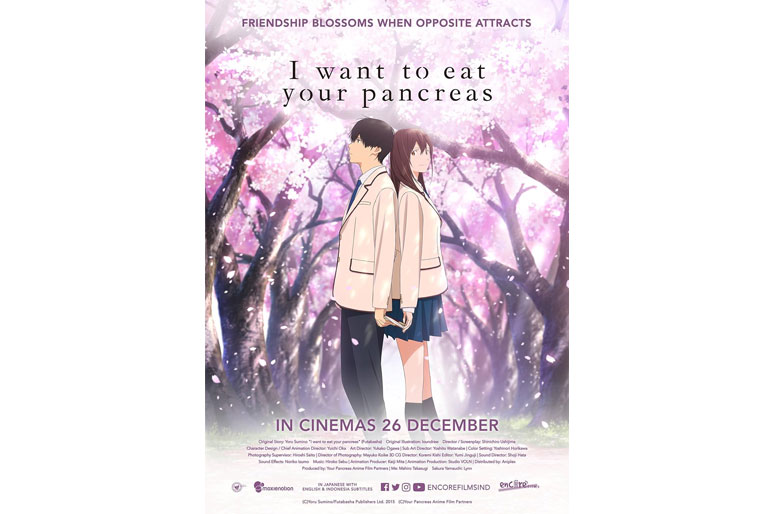
Don’t be misled by the unusual title – I Want to Eat Your Pancreas is not a horror film, but a heartrending drama about living life to the fullest in the face of death. The story revolves around a high school girl named Sakura and her classmate (whose name is not revealed until the very end, but he’s often referred to as “Haruki” in discussions), an introverted boy who narrates the story. Sakura is bubbly, popular, and seemingly has everything going for her – except she secretly suffers from a terminal pancreatic illness. The protagonist accidentally discovers Sakura’s secret when he finds her diary titled “Living with Dying.” Rather than pushing him away, Sakura reaches out to him, excited to finally have someone to confide in outside her family. She almost adopts him as a friend, much to his surprise, since he’s a loner by choice. The two begin spending time together, embarking on little adventures from Sakura’s bucket list. Their friendship is an odd yet profound one: Sakura is determined to experience as much joy as possible in her remaining time, and the boy – initially hesitant and emotionally guarded – gradually opens up under her radiantly positive influence. As they go to restaurants, take day trips, and talk about everything under the sun, it becomes clear that Sakura is teaching him how to live, and he’s giving her a sense of normalcy (treating her not just as “the sick girl,” but as a genuine friend). The title comes from a playful, superstitious saying Sakura mentions: if you eat an organ from someone else, it’s believed you might heal your own. When she cheerfully says “I want to eat your pancreas,” she’s essentially joking that she wants to borrow his healthy pancreas since hers is failing – a dark humor that highlights how candid and unafraid she is in discussing her condition. The emotional weight of the movie grows as her illness quietly progresses. There are tender scenes where Sakura admits her fears in rare vulnerable moments, and the protagonist finds himself desperate to somehow help her even though he can’t cure her. The film’s most devastating moment comes unexpectedly (and we’ll avoid explicit spoilers for those who haven’t seen it): just when it seems like Sakura might have more time, fate intervenes in a cruel way. The abruptness of tragedy in I Want to Eat Your Pancreas shocks both the viewers and the characters, making the final portions of the movie incredibly emotional. Our once-cold narrator breaks down completely upon reading Sakura’s last letters to him, where she expresses how meeting him changed her life and made her final days happy. Through tears, he finally understands the impact they had on each other. The film ends on a note that is both heart-wrenching and hopeful – he connects with someone new, carrying forward the lessons Sakura taught him about friendship and openness. This movie is a rollercoaster of emotions, often leaving audiences sobbing yet strangely uplifted. It reminds us that life, however short, can be bright and meaningful when shared with someone who truly cares.
9. Colorful
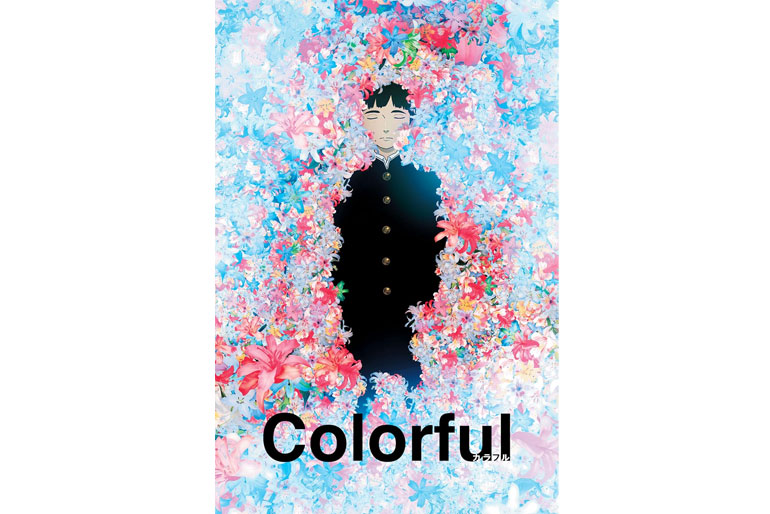
Colorful is a unique entry on this list – it deals with the heavy subject of suicide and getting a second chance, delivering its sadness in a thought-provoking and ultimately hopeful way. The film begins in an unusual afterlife scenario: a formless soul has just arrived at a train station of death, feeling deeply dejected. This soul is informed by a spirit guide (a little boy named Purapura) that it has “won” a lottery of sorts – it will get to return to life in the body of a recently deceased person, to try to remember what sin it committed in its past life and to attempt to make things right. The soul, reluctant but with no alternative, is placed into the body of Makoto Kobayashi, a 14-year-old boy who had just committed suicide. When our protagonist wakes up as Makoto, he inherits a troubled life: Makoto was a depressed teenager who felt isolated and disillusioned. As the soul-in-Makoto, he now has to navigate Makoto’s life – going to school, dealing with family – while also solving the mystery of why Makoto took his own life and what personal failing the soul had in its own previous existence. The premise sets the stage for many emotional moments. Early on, the soul experiences Makoto’s reality: parents on the brink of divorce, a father who is meek and overworked, a mother whose affair shattered Makoto’s respect for her, and a household tense with unspoken regrets. At school, he discovers Makoto had no friends and was disgusted by the hypocrisy and pressures around him. One classmate, Saotome, bullied Makoto and seems uninterested in anything but exam scores. Another girl, Hiroka, whom Makoto had a crush on, is revealed to be engaging in enjo-kōsai (compensated dating with older men) to buy fancy things – a secret that disillusioned Makoto deeply. Living Makoto’s life day by day, the soul begins to empathize with the boy’s despair. There’s a particularly poignant storyline with a strange, quiet girl named Shoko, who reaches out in kindness but whom Makoto pushed away when he was alive. As “Makoto” now, the soul slowly learns that even small connections and understanding can bring color back to life. The sadness in Colorful often comes in subtle moments: the dinner table silence between family members who don’t know how to talk anymore, or Makoto’s realization of how much pain his suicide attempt caused those around him. One of the most heart-wrenching scenes is when Makoto’s mother breaks down and sincerely apologizes to him for her mistakes, not realizing the soul inside is just now grasping how much Makoto actually meant to her. Over time, the soul helps mend some of Makoto’s relationships – he befriends a classmate and even starts painting again, discovering a bit of beauty in the world. As the six-month deadline approaches, the truth of both Makoto’s and the soul’s past emerges, offering a double catharsis. Colorful drives home the message that even if life feels hopeless and monochrome, there are people who care and chances to find forgiveness. By the end, many viewers find themselves in tears as the film gently emphasizes the value of life, imperfections and all. The sadness in Colorful is the kind that ultimately encourages gratitude – it’s heavy seeing Makoto’s pain, but immensely moving to watch him (and the soul) get a chance to heal. This movie assures us that even in the darkest times, life can regain its color.
10. Grave Of The Fireflies
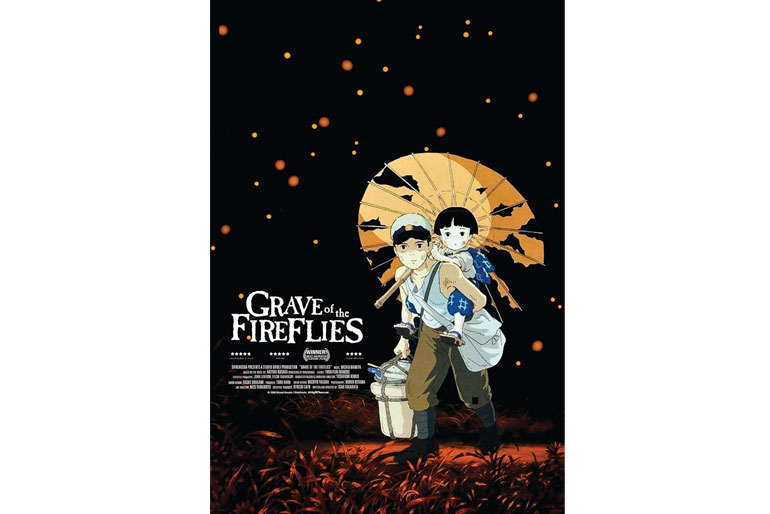
It’s almost impossible to talk about sad anime films without mentioning Grave of the Fireflies. This 1988 Studio Ghibli film, directed by Isao Takahata, is widely regarded as one of the most heart-rending war movies ever made (animated or otherwise). Set in Japan during the final months of World War II, it follows two siblings, 14-year-old Seita and his little sister Setsuko, as they struggle to survive after their city is firebombed. From the opening scene, we know things won’t end well – the film literally begins with Seita, gaunt and weak, dying at a train station as an unseen narrator (his spirit) tells us the date of his death. What makes the journey so emotional is watching the innocent hope and determination of these children in the face of impossible hardship. After losing their mother to the bombing (in a gut-punch of a hospital scene) and becoming estranged from a distant aunt who finds them a burden, Seita and Setsuko move into an abandoned bomb shelter in the countryside. They try to make the best of it, with Seita doing his utmost to shield Setsuko from the harsh realities of war. In the midst of horror, the film finds moments of pure, gentle humanity: a memorable scene has Seita and Setsuko catching fireflies to light up their dark shelter one night, the little girl giggling as the insects twinkle around her. It’s a brief respite from their struggles – a child’s delight in something beautiful. But by morning, Setsuko is burying the dead fireflies in the soil, innocently asking why the fireflies and her mother had to die. It’s an emotionally devastating metaphor for the fragility of life during wartime. As food grows scarce, the siblings’ situation worsens. Seita, still just a boy himself, resorts to stealing farm crops to feed Setsuko, but it’s never enough. Watching cheerful, sweet Setsuko slowly succumb to malnutrition – going from playful and imaginative (she makes “rice balls” out of mud while pretending not to be hungry) to listless and hallucinating – is excruciating. The animators portray her decline unflinchingly yet compassionately: her once-round cheeks hollow out, rashes form on her skin, and she cries in confusion and pain. Seita’s desperation and guilt at failing to keep his sister alive are palpable. By the time the inevitable comes and Setsuko lies weakly on a futon, murmuring about eating a feast in her dreams, there’s no holding back the tears. Even on multiple viewings, these final moments break your heart – especially when Seita cremates her little body, lovingly placing her favorite doll by her side. Grave of the Fireflies is a critique of war’s toll on the innocent, but more intimately, it’s the tragic story of a brother and sister whose love for each other is immense and powerless to change their fate. Many viewers are left sobbing by the end, haunted by the image of Seita and Setsuko’s spirits reunited, surrounded by fireflies. It’s a beautiful but harrowing film that stays with you forever – truly one of the saddest anime movies ever made, and yet, one of the most important.
11. Wolf Children
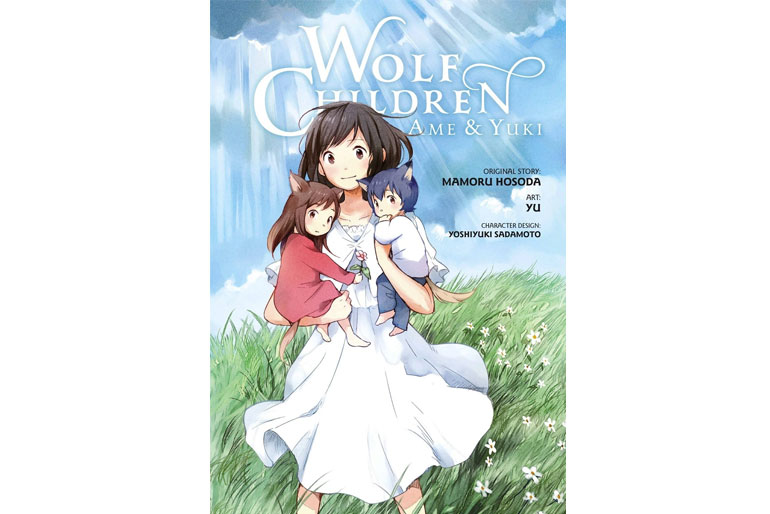
Wolf Children is a film that manages to be both heartwarming and heartbreaking, often at the same time. Directed by Mamoru Hosoda, it tells the story of Hana, a university student who falls in love with a mysterious young man who turns out to be a wolfman (literally, he can shift into a wolf). Their love is pure and gentle, and Hana accepts him completely. They build a quiet life together and have two children: a daughter, Yuki, and a younger son, Ame – who inherit their father’s ability to transform into wolves. Tragedy strikes early: the wolfman dies unexpectedly, leaving Hana to raise their half-wolf, half-human children all alone. What follows is an emotional journey of single parenthood under extraordinary circumstances. The early struggles are both funny and touching – Hana studying wolf behavior from library books to figure out how to care for her little “cubs,” or desperately trying to soothe two howling toddlers without alerting the neighbors. Feeling the pressures of society (and worried someone might discover the children’s secret), Hana moves to a dilapidated house in the rural countryside to give Yuki and Ame a freer, safer childhood. The countryside sequences are filled with a nostalgic warmth: Yuki chasing birds in the grass with boundless energy, Ame timidly exploring streams and forests, and Hana working tirelessly in a vegetable patch to provide for them. Hana’s dedication as a mother is deeply moving; she endures hardship, isolation, and moments of doubt, but her love for her kids never wavers. As Yuki and Ame grow, the film reveals its central poignant conflict: each child must choose their path – human or wolf – and Hana must find the strength to let them become who they are. Yuki, once a rambunctious wild child, decides she wants to live as a human and eventually attends school, learning to tame her wolf side to fit in with friends. Ame, frail and quiet in youth, finds his confidence in the wilderness, guided by an elderly wolf in the mountains, and leans toward living as a wolf in the wild. For Hana, watching their paths diverge is bittersweet. One particularly emotional scene has Hana frantically searching for Ame in the middle of a typhoon; he has run off into the forest. She slips and falls down a slope, and in a half-conscious state she “sees” the spirit of her late husband who wordlessly assures her that she’s done enough and that Ame will be okay. It’s a subtle, magical moment that always brings tears. In the climax, Ame (in wolf form) leads Hana to safety and then disappears into the mountain forests, essentially saying goodbye. Hana, injured but conscious, realizes her little boy has chosen the life of a wolf and she has to let him go. She breaks down in tears – a mix of sorrow, pride, and relief – calling thank you to him. By the end, Yuki is thriving at a dorm in junior high, and Hana lives alone in the countryside, her purpose as a protective mother fulfilled. She reflects on raising her children, comparing it to a fairy tale both wondrous and sad. Wolf Children leaves viewers with tears in their eyes but warmth in their heart. It’s sad because it captures the pain of a parent eventually having to say farewell as their children grow up and find their own way. But it’s also a celebration of a mother’s extraordinary love, making it a profoundly touching film that many describe as “beautifully sad.”
12. Ride Your Wave

At first glance, Ride Your Wave might seem like a fun, romantic anime with surfing and summer vibes – and it is that, but it’s also a poignant tale about love and loss. Directed by Masaaki Yuasa, the film follows Hinako, a college girl who loves to surf. She’s cheerful but a bit directionless in life aside from her passion for riding the waves. One day, a fire breaks out in her apartment building and she is rescued by Minato, a kind young firefighter. Sparks fly (figuratively this time) and they soon start dating. The early parts of their romance are pure joy: they cook meals together, Hinako teaches Minato how to surf, and they even create a cute little song that they sing to each other (“Brand New Story,” which becomes a motif throughout the film). Their chemistry is lovely and earnest, making us quickly invested in their happiness. Then comes the gut-wrenching turn: Minato dies in a tragic accident at sea while trying to help someone. His sudden death hits both Hinako and the audience like a ton of bricks. One moment he was this vibrant, caring presence, and the next he’s gone, leaving Hinako drowning in grief. She withdraws from surfing and struggles to find meaning without him. This is where the movie takes a supernatural twist that symbolizes coping with loss. Hinako discovers that whenever she sings their special song, Minato’s spirit appears to her in water. Yes, water – he shows up in any water source nearby (a filled bathtub, a bottle of water, even as a goofy apparition in a big water jug). It’s an unusual concept, but emotionally resonant: Hinako literally can’t let go of Minato, so he “comes back” in the form of water whenever she’s yearning for him. At first, being able to see and talk to Minato again – even if he’s a ghost in a fishtank – seems wonderful to Hinako. She’s elated to spend time with him, hauling around a water-filled container so Minato’s spirit can accompany her. Some of these scenes are sweet and even humorous, as they try to go on dates with this new arrangement. But soon it’s clear that Hinako’s refusal to say goodbye is preventing both of them from moving on. There’s a touching sadness in those moments where Minato, appearing in the rain or in the ocean waves, gently encourages Hinako to live her life and find her footing without him. The climax comes with a literal and emotional huge wave. A mishap causes Hinako and others to be trapped atop a building, and the area is flooding. In order to save a friend’s little sister, Hinako must conquer her fear and surf again – this time on a giant, dangerous wave. As she rides, the silhouette of Minato made of water is there guiding her, almost like his spirit is the wave carrying her. It’s an exhilarating yet tearful sequence. Hinako finally realizes that Minato’s love will always be with her, but she must let his spirit go. She sings their song one last time, with more joy than sorrow, allowing Minato’s apparition to disperse peacefully into the sea. By the end, Hinako finds the strength to “ride her wave” in life, pursuing her dreams and cherishing the memory of Minato without clinging to the past. Ride Your Wave is sad in that it confronts the heartbreak of losing someone dear far too soon. But it’s also uplifting, showing how the love left behind becomes the encouragement to carry on. Many viewers shed tears through Hinako’s journey – especially during that final ride where love and letting go merge in a beautiful, bittersweet crescendo.
13. Violet Evergarden
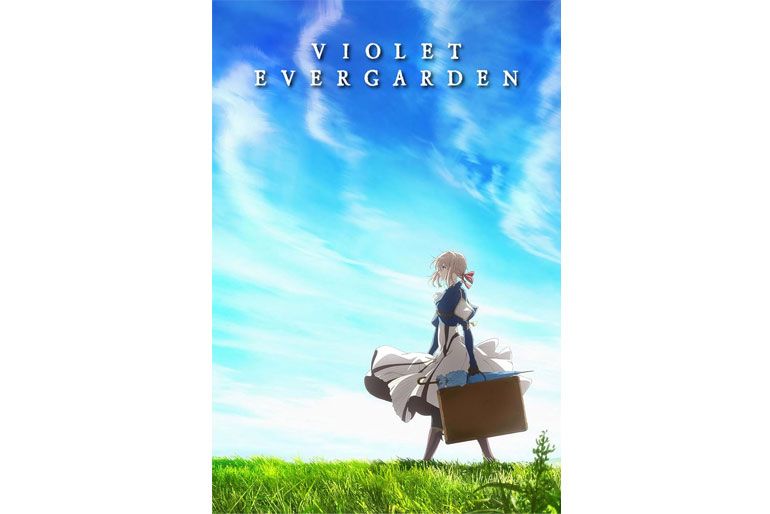
Violet Evergarden (produced by Kyoto Animation) is an elegantly animated story that delves deeply into the emotions of its characters, and boy, does it know how to make you cry. While Violet Evergarden is best known as a TV series, it also has a feature film and several extended episodes, all of which carry the same emotional core. Violet, the protagonist, is a young former soldier – essentially a child raised only to fight in a war – who, now in peacetime, is trying to understand the last words said to her by someone precious: “I love you.” The catch? Violet grew up on the battlefield and was treated more like a tool than a human, so she doesn’t fully grasp human emotions. She begins working as an Auto Memory Doll – basically a ghostwriter – crafting letters for people who can’t put their feelings into words. Each assignment Violet takes on becomes a moving vignette of its own, and many of them rank among the saddest anime moments out there. One unforgettable episode features Violet writing letters for a terminally ill mother. The mother has a young daughter around 7 years old, and Violet is hired to spend a week in their countryside home and help write several letters. It seems a bit odd at first – why many letters instead of just one goodbye note? – but as the week passes, it becomes clear the mother’s time is very short. The little girl doesn’t fully understand why Violet is there; she only knows that her mother is often bedridden and that Violet is typing letters behind closed doors. The child grows anxious and upset, craving attention from her mom, not realizing these letters are her mother’s final love-filled gifts to her. When the assignment ends, Violet leaves, and the mother passes away soon after. We then learn the truth: those letters were to be sent to the daughter on each birthday for years to come. When the first letter arrives and is read in Violet’s soft narration – the mother speaking to her daughter from beyond the grave, expressing love and hopes for her each year as she grows up – it’s impossible not to break down sobbing. Even Violet, who had been trained to be stoic and emotionless, weeps uncontrollably upon completing this job. That episode alone could secure Violet Evergarden a spot on this list of saddest stories. But the overarching narrative of Violet herself is equally tear-jerking. Throughout the series and into the film, Violet slowly comes to terms with her own feelings of grief and longing for Major Gilbert, the superior officer who told her “I love you” before they were separated in the war (and presumed dead). Seeing Violet transform from a doll-like, emotionally distant girl into someone who can cry, love, and understand others is incredibly moving. By the end of her journey, when Violet finally lets herself mourn and accept love, viewers are usually swimming in tears of both sadness and joy. Violet Evergarden is a masterclass in portraying heartfelt emotions. Its stories of love – romantic love, familial love, friendship – and loss hit hard. The combination of gorgeous visuals, a haunting musical score (that piano theme can trigger tears by itself), and sincere writing means that if you watch this, you should absolutely keep tissues nearby. It’s an emotional experience that proves healing can come through understanding even the saddest of feelings.
14. Josee, the Tiger and the Fish

Josee, the Tiger and the Fish is a romantic drama that balances moments of charm and joy with profound challenges and heartache. The story centers on two characters: Tsuneo, a college student who’s an aspiring marine biologist, and Kumiko, a young woman who calls herself “Josee” (after a character from a book). Josee is artistic, stubborn, and imaginative – and she’s also wheelchair-bound due to a disability that has kept her largely sheltered her whole life. They meet by chance (quite literally colliding – Tsuneo saves Josee when her wheelchair careens downhill on a reckless outing arranged by her grandmother). As a result, Tsuneo ends up being hired as Josee’s day caretaker. At first, Josee is prickly and guarded, using a tough demeanor to mask her loneliness. She’s been treated as “different” or pitied by most people, and her iron-willed grandmother has kept her somewhat isolated “for her safety.” Tsuneo, needing the money and initially viewing it as just a job, gradually becomes genuinely interested in Josee’s world. He learns that she loves painting and reading, and secretly yearns to see the ocean outside of her picture books. There’s a tender sequence where Tsuneo starts taking Josee out on little excursions – early morning beach trips, libraries, aquariums – essentially giving her a first real taste of the outside world. With each adventure, Josee’s hardened shell softens, and her vibrant, playful side emerges. The two fall in love in a gentle, natural way as they enrich each other’s lives: Josee gets to experience freedom and chase her dreams of art, and Tsuneo gains a new perspective on life and what it means to persevere. However, their path isn’t without obstacles. A dramatic turning point comes when Tsuneo is severely injured in an accident (trying to save someone). He ends up unable to walk for a period, which jeopardizes his own dream of studying abroad to dive with manta rays. This development hits both of them hard. Tsuneo, always active and upbeat, struggles with frustration and despair in physical therapy, while Josee is wracked with guilt, feeling that she was indirectly the cause of Tsuneo’s misfortune (and also fearing that perhaps she’s a burden after all). In a moment of insecurity and heartbreak, Josee pushes Tsuneo away, pretending she’s decided to retreat back into her closed world. For a while, both suffer apart – Tsuneo depressed and missing her, Josee convinced that Tsuneo pursuing his own dream is more important than anything she could give him. The final act brings all the feels. Josee musters her courage and arranges her first ever art exhibition, pouring her feelings for Tsuneo into her artwork (including a beautiful painting of a “tiger” that symbolizes her and a “fish” symbolizing Tsuneo from her perspective). Meanwhile, Tsuneo recovers enough to rush to the exhibition after receiving a heartfelt letter – only to find Josee has already left for the ocean shore she once longed to see, thinking he wouldn’t come. The reunion that ensues at the beach is cathartic: Tsuneo finds Josee by the waves, and they finally embrace and acknowledge their love, both crying tears of relief and happiness. Josee had wished to stand by the ocean, and with Tsuneo’s support – literally and emotionally – she achieves it, fulfilling her dream as he promises they’ll face the future together. While Josee, the Tiger and the Fish ends on a hopeful note, the journey there is ripe with emotional moments that highlight Josee’s fears of abandonment and Tsuneo’s moments of hopelessness. It’s a film that underscores how people with hardships can still dream and how love can give someone the strength to fight their inner “tigers.” Many viewers find themselves tearing up especially during the scenes where Josee confronts her insecurities and when Tsuneo reads Josee’s letter – it’s a sincere, sentimental story that earns its tears by showing the growth and resilience of its characters. In the end, the sadness gives way to inspiration, making the emotional ride very much worthwhile.
15. The Boy and the Heron
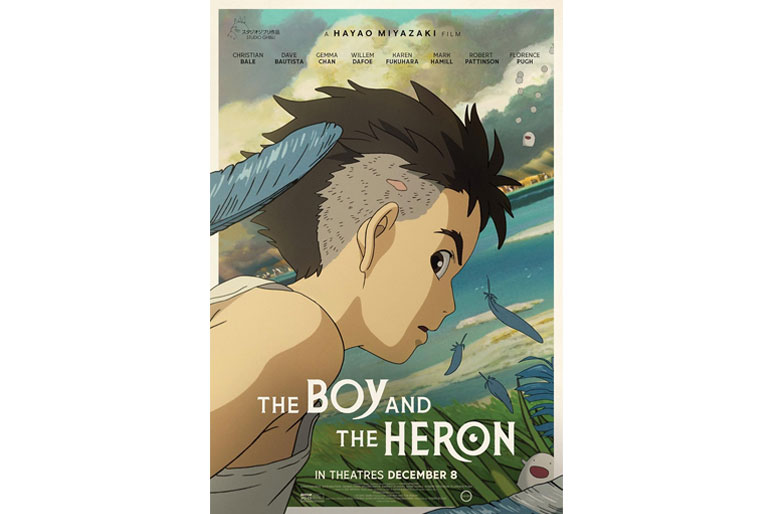
Hayao Miyazaki’s The Boy and the Heron (originally titled How Do You Live?) is a more recent entry, and as expected from a Miyazaki film, it is layered with fantasy – but it’s also a story born from personal sadness. The movie follows Mahito, a 12-year-old boy sent to the countryside during World War II after a tragic loss: his mother perished in a fire during the Tokyo bombings. Mahito is grief-stricken and confused. To compound his emotional turmoil, his father remarries – to his late mother’s younger sister, Natsuko, which leaves Mahito with mixed feelings. They all move to a rural mansion to escape the war, and Mahito struggles to adjust, feeling lonely and resentful, haunted by nightmares of his mother. Early on, Mahito encounters a talking grey heron that is both eerie and comical – this heron claims to have secrets about Mahito’s mother and lures him toward an abandoned tower on the property. Thus begins a surreal journey: Mahito enters a fantastical world within the tower, hoping to find answers or perhaps even his mother. The parallel dimension is full of strange creatures and magical realism, as one would expect from Miyazaki, but underlying it all is Mahito’s yearning to see his mom again or at least make sense of her death. One of the saddest aspects of The Boy and the Heron is the way it portrays grief. Mahito’s every action in the fantasy world is driven by that desperate wish that perhaps his mother isn’t really gone or can be retrieved from wherever souls go. In this other realm, he meets characters that seem to echo his inner struggles, including someone who appears to be an older version of himself grappling with regret. The heron, which initially is obnoxious and pushy, transforms throughout the story, symbolizing Mahito’s changing understanding of life and death. There are quiet, poignant moments where Mahito has to confront the reality that as much as it hurts, his mother is gone. One could say the entire fantastical quest he undergoes is a metaphor for processing loss. The sadness in the film doesn’t necessarily come from overt tragedy happening (the tragedy has already happened before the story starts), but more from watching a child work through overwhelming sorrow and confusion. In one scene, Mahito finds a vision of his mother, alive and singing a lullaby, only for it to fade away like smoke – a moment that underscores the finality of death and nearly brings Mahito (and viewers) to tears. Ultimately, The Boy and the Heron concludes with Mahito returning to the real world having gained a sort of bittersweet acceptance. He cannot change what happened, but he can keep living, carrying his mother’s memory in his heart. The film ends on a subtle note of hope: planes from the war still loom in the sky, but Mahito stands a little stronger, ready to face whatever comes next with his family. This movie’s sorrowful undercurrent is made even more poignant knowing that Miyazaki created it as a way to deal with his own grief (the story is partly inspired by the director’s experiences and feelings during World War II and personal loss). It’s a mature kind of sadness, one that might resonate deeply with adults who understand grief, while younger viewers feel for Mahito’s loneliness. The Boy and the Heron is a testament to how fantasy can be used to explore very real emotions, leaving us moved by a child’s journey to find peace after tragedy.
16. In This Corner of the World
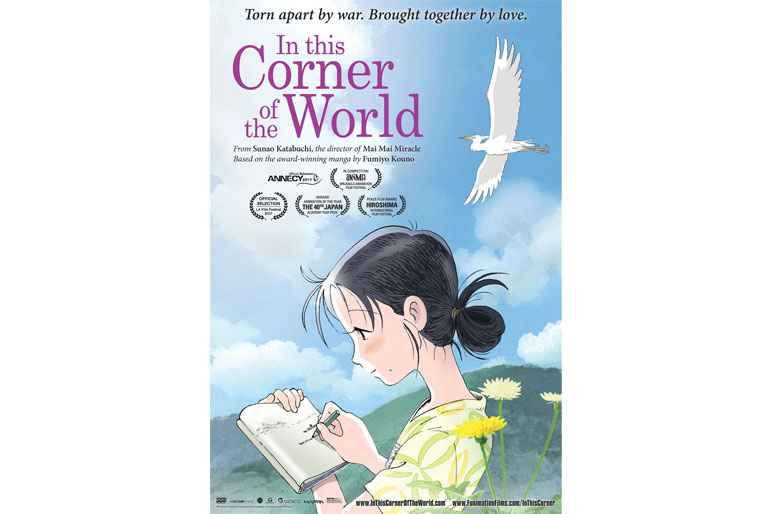
Set in Hiroshima during World War II, In This Corner of the World is a film that finds melancholy in the quiet details of everyday life amid chaos. The story follows Suzu Urano, an 18-year-old girl who moves to the port city of Kure (near Hiroshima) in the early 1940s to marry Shusaku, a young naval officer she only vaguely knew as a child. Suzu is sweet, a bit dreamy, and loves to draw. As she settles into her new life with her in-laws, she brings warmth through her art and her gentle spirit, even as war looms in the background. The beauty of this film lies in its slice-of-life approach. We watch Suzu go about daily activities – cooking meager rations, sketching the sea and sky, playing with her niece Harumi – and it’s all very relatable and tender. These normal moments are contrasted against the encroaching hardships of war: food grows scarcer, air raid drills become routine, and the distant thuds of bombs inch closer. There’s a sadness that gradually seeps in as we realize these peaceful days are numbered. One of the film’s most heartbreaking turns involves Suzu’s relationship with her young niece. Suzu and little Harumi are walking together one day in 1945 when a U.S. air raid hits unexpectedly. In a devastating instant, a bomb blast takes Harumi’s life and costs Suzu her right hand (her dominant hand). The scene isn’t gruesome, but it’s shocking and profoundly sad – Suzu awakens after the blast confused, calling out for Harumi, only to see the child’s sandal… and understand she’s gone. For an artist like Suzu, losing her drawing hand compounds the trauma; it’s like a piece of her identity was taken. In the aftermath, Suzu falls into depression. She blames herself for Harumi’s death, thinking if only she’d held on tighter to the little girl… It’s a raw portrayal of grief and guilt. She can’t bring herself to draw anymore and even contemplates that she “wishes she had died instead.” The war’s end comes with the atomic bombing of Hiroshima – shown indirectly through blinding white flashes and a black rain falling from the sky. Suzu’s family in Hiroshima city are among the casualties, adding to her sorrow. When Japan announces its surrender, Suzu breaks down in tears and anger, feeling everything they endured was for nothing. It’s an incredibly moving breakdown – a mix of relief that the war is over, anguish over all that was lost, and perhaps a release of pent-up fear and sadness. Yet, amid all this tragedy, In This Corner of the World finds a way to be hopeful. Suzu’s personal lowest point is followed by a poignant ending that suggests resilience. In the final scenes, Suzu encounters a little war orphan – a girl about Harumi’s age – wandering alone, shell-shocked and dirty. Suzu, still full of pain but with so much love to give, embraces the orphan and effectively adopts her into the family. In that act, Suzu chooses life and healing, honoring Harumi’s memory by saving another child. This climax ensures that our tears are not only for the sorrow but also for the touching affirmation of humanity. The film closes with Suzu sketching again with her left hand, drawing her new family together – a quietly triumphant image. In This Corner of the World leaves many viewers in tears multiple times: tears of sadness for the characters’ losses, and tears of bittersweet joy for their will to keep living. It’s a gentle, powerful reminder of the ordinary people (especially women) who endured war with courage and heart, making the best of the worst situation. Suzu’s story feels painfully real, and that’s what makes it so affecting.
17. Maquia: When the Promised Flower Blooms
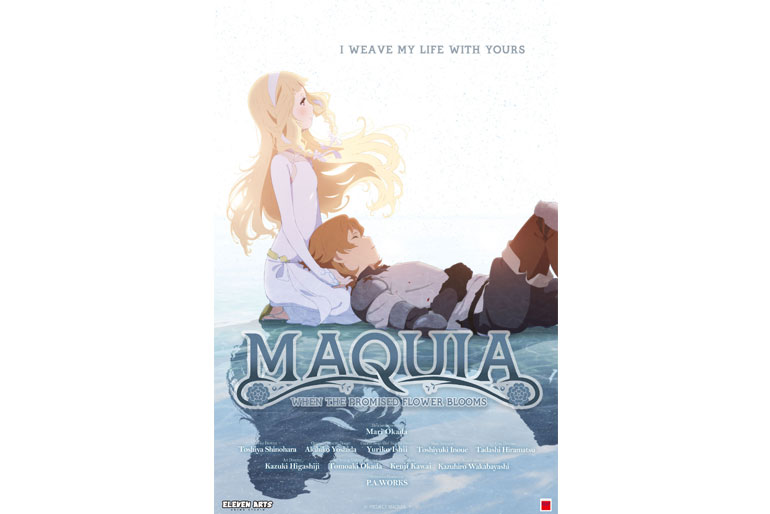
A fantasy drama about motherhood and immortality, Maquia: When the Promised Flower Blooms is the kind of movie that sneaks up on you emotionally. It crafts an imaginative world with mythical clans and medieval kingdoms, but at its core, it’s a deeply human story about a mother’s love and the pain of letting go. Maquia is a young girl from the Iorph, an elf-like people who live for centuries and stop aging in their mid-teens. They spend their long lives weaving a special cloth that records their history. Despite her age (she’s around 15 in appearance), Maquia is warned to avoid attachments with outsiders because, inevitably, she will outlive them and know the sorrow of loss. This warning becomes her reality sooner than expected. Invaders attack Maquia’s homeland, scattering the peaceful Iorph. In the chaos, Maquia finds a human baby boy, newly orphaned, and makes a spur-of-the-moment decision to take him with her and care for him. She names him Ariel. What follows is one of the most heartfelt depictions of motherhood you’ll see in anime – made all the more heartrending by the unique circumstances. Maquia, who will never age physically, raises Ariel through infancy into childhood and adolescence, posing as his big sister in public to avoid suspicion. We see all the little moments that any mother and son might experience: Ariel clutching Maquia in fear during a thunderstorm, Maquia working tirelessly as a seamstress to provide for him, Ariel at times yelling “I hate you!” during rebellious phases, only to come running back in remorse. But unlike normal families, Maquia knows from the start that this journey will emphasize her own loneliness; Ariel will grow old, and she will remain the same. The film does an incredible job building up this subtle sadness. For instance, there’s a scene where a young Ariel, noticing Maquia never seems to age like other moms, furiously asks her what she is and why she looks the same year after year. It’s a crushing moment for Maquia, who realizes Ariel is beginning to sense their difference. As Ariel grows into a teenager, the dynamic shifts. He struggles with feelings of inadequacy because Maquia protected and supported him for so long. Eventually, he leaves home to become a soldier, partially to assert his independence. Maquia, meanwhile, faces the quiet heartbreak of watching the child she raised slip away emotionally – a very real scenario for parents, made fantastical only by the fact that she still looks like a 15-year-old girl weeping for her grown son. The climax of the movie is a guaranteed tearjerker. Years pass, war and politics resolve in the background, and Maquia finally reunites with Ariel. But by this time Ariel is a full-grown man in his twenties with a family of his own – and he harbors resentment and hurt, wrongly believing Maquia abandoned him (when in fact she was allowing him to live his own life). In an emotional confrontation, all the pent-up feelings pour out. Ariel breaks down and calls Maquia “Mom” for the first time in years, sobbing in her arms like the little boy he used to be. It’s a cathartic release for both of them (and let’s be honest, for the audience too). And then, the inevitable: we flash forward to Ariel as an old man on his deathbed, and Maquia still looks youthful. She comes to see him one last time. This final scene is gentle and devastating – Maquia smiles through tears as she cradles Ariel, who is now elderly and frail, much like she did when he was a baby. He reassures her that she was the best mother and that she’ll never be alone because the love she gave lives on. When Ariel passes away in her arms, it’s almost unbearably sad yet strangely peaceful. Maquia concludes with Maquia continuing on, carrying the weight of time but also the warmth of having loved and raised a son. This film wrecks even the most stoic viewers; it’s a meditation on parental love, time’s relentless march, and the beautiful pain of saying goodbye. Anyone who’s experienced a child growing up or the loss of a parent/child will find it hits extremely close to home, despite its fantasy trappings. Prepare to cry a lot during this one – but also to be moved by how beautiful the bond between a parent and child can be.
18. Pokémon: The First Movie
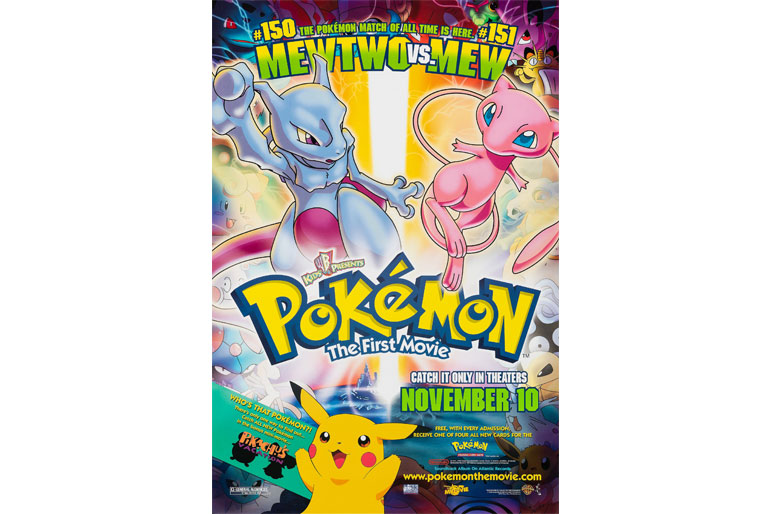
For many ’90s kids, Pokémon: The First Movie was one of the earliest times a cartoon made them cry. Also known as Mewtwo Strikes Back, this film isn’t typically sad all the way through – in fact, much of it is action-packed and even comedic, featuring the beloved Pokémon characters we knew from the TV show. But it earns its place on this list for one particular sequence that has become legendary for unleashing a flood of tears from unsuspecting viewers. The movie’s plot involves a powerful, genetically engineered Pokémon named Mewtwo, who is grappling with existential questions after being created in a lab. Feeling used and betrayed by humans, Mewtwo seeks revenge and plots to prove Pokémon superiority by luring the best trainers (including our hero Ash Ketchum) to an island for battle. Amid the chaos, Mewtwo makes evil “clone” versions of various Pokémon, leading to a climactic showdown: original Pokémon vs. cloned Pokémon. What starts as a flashy showdown escalates into something unexpectedly tragic. There’s a haunting scene where Pikachu is slapping at his own clone who is slapping back, both refusing to truly fight but also unable to stop due to Mewtwo’s influence. All the Pokémon pairs start battling in a brutal, tireless struggle – and the film’s tone shifts dramatically. The background music softens to a sorrowful song (“Brother My Brother” in the English version), and even Team Rocket’s comedic duo quietly remark that this fighting is wrong. The Pokémon are exhausting themselves, and tears begin welling up in their eyes (and ours). The emotional crescendo comes when Ash, ever the courageous and compassionate trainer, tries to intervene to stop Mewtwo and the original mythical Pokémon Mew from dueling. In a selfless act, Ash throws himself between a blast from Mewtwo and Mew – and is struck by the combined psychic attack, turning him into stone. Ash collapses, petrified and lifeless. In that moment, everything falls silent and still. Pikachu, Ash’s loyal best friend, runs to Ash’s statue-like body and desperately tries to wake him. He shocks Ash with electricity again and again, squeaking “Pika! Pika!” in panic, to no effect. Realizing his friend is gone, Pikachu’s expression shifts to one of pure heartbreak. Then Pikachu begins to cry – big, glistening tears falling down his cheeks as he emits quiet whimpers. This sight is incredibly affecting; Pikachu’s grief is raw and palpable. One by one, all the Pokémon – both originals and clones, former enemies – gather around and also start to cry. Their tears literally rain down, pooling together and glowing with some mysterious energy. In a miraculous turn (befitting the hopeful spirit of Pokémon), the power of the Pokémon’s collective sadness reverses Ash’s petrification. The glowing tears revive him, and Ash wakes up dazed but alive, much to everyone’s joy. Pikachu tackles him with the happiest hug ever, wiping away our tears of sorrow with tears of happiness. Yes, Ash is okay in the end – but that doesn’t erase how intensely sad that sacrifice scene was. It’s a moment that took a light-hearted franchise and gave it real dramatic weight about friendship and love. Many kids (and adults) found themselves sobbing as Pikachu mourned, not expecting a Pokémon movie to hit so hard emotionally. Even the antagonist Mewtwo is moved, coming to understand that the circumstances of one’s birth (clone or not) don’t define the worth of a life. Mewtwo ultimately lets all the characters go free and even erases their memory of the events, making the whole ordeal like a painful dream – except the audience remembers, and was forever changed by it. Pokémon: The First Movie remains iconic for that bittersweet scene. It taught a generation that even a fun adventure story can carry a message about compassion that reaches deep into your heart. To this day, ask any fan about “the Pikachu crying scene” and they’ll likely recall how they bawled their eyes out. It’s proof that sometimes the most unexpected movies can deliver the most emotional moments.
Related Post
- Best Anime Villains Of All Time
- Big Boob Anime: A Friendly Look at Memorable Characters
- 22 Strongest Anime Characters of All Time, Ranked
- Best Black Female Anime Characters
- Top 10 Female Anime Characters of 2025
Conclusion
From folktale princesses and gentle forest spirits to young lovers separated by time, these anime movies run the gamut of heartache and hope. Each film we’ve explored tells a distinct story, yet they all share a common thread: the ability to make us deeply feel. Whether it’s through beautifully drawn visuals, relatable characters, or poignant music, these movies tap into universal emotions. They remind us of the pain of saying goodbye, the weight of regrets, and the enduring power of love and connection.
It’s often said that crying during a sad movie can be cathartic. As we’ve seen, many of these films don’t revel in sadness just for misery’s sake – instead, they pair sorrow with meaning. Grave of the Fireflies underscores the value of peace and the human cost of war. Your Name and 5 Centimeters Per Second make us cherish timing and the people we hold dear. A Silent Voice and Colorful show that even after mistakes or in dark times, there can be redemption and understanding. And stories like Wolf Children or Maquia celebrate the profound, if sometimes painful, beauty of parental love.
If you’re new to anime, don’t be surprised at how emotionally rich these films can be. Animation is simply a medium, and it can convey feelings as powerfully as any live-action drama – sometimes even more so, when fantasy and metaphor are used to express what words cannot. Longtime anime fans already know that behind the cute characters or fantastical settings, there are often stories that hit close to home. Watching these movies might require a tissue (or an entire box of them), but they’re experiences that stay with you. They have a way of making you reflect on your own life – on the people you love, the losses you’ve faced, and the moments that have moved you.
So if you’re in the mood for a good cry or just a meaningful story, give one of these “saddest anime movies” a try. They show the incredible range of anime as an art form: how it can break your heart and then gently put it back together. And ultimately, each of these films carries a note of hope – a reminder that sadness and joy often coexist, and that even in our tears we can find something beautiful.

